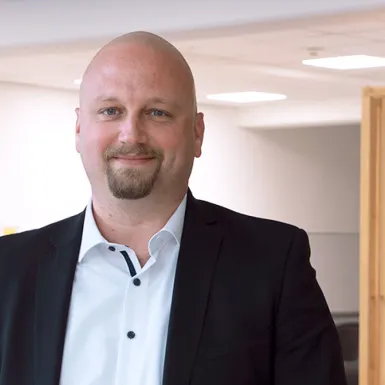And what about the three success factors for the customer service center?
Kerpes: In my opinion, there are five success factors: three that people like to talk about and two others. Firstly, it’s about functional and targeted processes. These must never be understood as static variables; a functioning CSC continuously optimizes its own processes. Secondly, you need to have the right technology in place. Here, too, there are continuous further developments with a high level of effectiveness. And thirdly, it’s about employees who are really eager to provide good and media-based customer service. A CSC must not be understood and operated as a switchyard for personnel restructuring, but must be something like the SC Freiburg soccer club is for German soccer. This club can’t afford expensive players, but has a great training concept to get the team fit. Thus, a CSC offers a flexible, modern and varied work environment for all employees.
Now let’s get to the two factors that people don’t like to talk about. Success factor number four: positive management attention. This is key. You can never build a successful and accepted CSC without the backing from the bank’s management. If you have the management on board, then you can make a lot of things happen, otherwise the whole thing just fizzles out. You have to get management to bear the pain of saying that I no longer have to find the right solution for every customer, but it’s totally OK for me to offer a super service for 80 percent of the customers using efficient standard processes. Success factor number five: selecting the right project managers for the setup. This takes the courage to rely on people who have a deep understanding of processes and a high affinity for technology. And perhaps more importantly: these people need to be enthusiastic about it. If I assign this undertaking to someone who has long worked in a branch-based environment and who has since regarded digitalization and standardization as the USP of direct banks, I shouldn’t be too optimistic that this person will do things differently in the new environment. I always refer to this as “attitude beats experience”, which has often proven to be true.
How can you find the perfect employees for a CSC?
Kerpes: Just as SC Freiburg does. If you don’t have a lot of money, you have to rely on talents, their development and a reputation as a stepping-stone to career success. Many of my former employees have developed within the CSC or have subsequently moved to the area of advisory services, and their experiences have brought a huge benefit to the new units. But it’s also about how I promote myself and the CSC: CSC working hours from 8 a.m. to 8 p.m. and sometimes also on Saturdays can be seen as a disadvantage – or as a workplace with maximum flexibility in terms of time. The challenge here is: I need to be convinced of this and also exemplify it.
Put simply, it is crucial to get people excited about the idea of a CSC, be open-minded, to also involve these people and grow together with them. When starting the CSC, I always told the team: “Just wait two more years and nobody in the bank is going to laugh at our little CSC.” And that’s exactly what happened. Furthermore, this idea has provided all employees with additional motivation – including me, by the way. I like the story of the small Gaulish village that stands up to the Romans. Today, a good CSC enjoys a high status in every savings bank. But it was a long way to get there.
And how can you win over employees for media-based advisory services?
Mitze: You definitely need to have employees who are very open-minded and who like to break new ground. Especially the idea of advising customers in a video call can be a hurdle for many at the beginning. However, practical experience shows that our customers are totally enthusiastic about the new advisory service. This positive effect is also felt by the employees. In my team, I have established a culture that embraces new ways of working. More precisely: creative approaches to work, numerous organizational options and flexible working hours – oriented to the needs of our customers. As a team lead, I make sure that I involve and inspire my employees and that we can speak openly. This team spirit also makes it easier to find new employees.
What advice should be given to a bank executive who does not yet have media-based advisory services in place and would like to introduce them?
Mitze: Draw on practical experience! Turn to pioneering banks for good advice! My suggestion: don’t try to stubbornly cling to a concept, but act in time once you realize it doesn’t feel right in real-life operations. Consistent and quick action can be an effective game changer.
A holistic view is crucial here. Providing valuable media-based advice always involves good interaction with the branch-based sales force.
And what advice should be given to a bank executive who wants to turn the customer service center into a more powerful organization?
Kerpes: This takes a fair amount of pioneering spirit and courage. You should be convinced of the undertaking despite internal opposition – if not, then better keep your hands off it. Management and its support are the be-all and end-all, especially at the beginning. You cannot build a CSC from the bottom up, only the other way round. If the management doesn’t overcome the concerns of the die-hards, the CSC will be tilting at windmills.
Once again, it is also important to bring people into the CSC who are keen on this kind of work, who like to change things and who also have a bit of a soft spot for technology. Error culture is another prerequisite. Especially at the beginning, such a project is highly prone to minor and major errors. In a CSC, however, errors should be seen as an opportunity to learn and established as part of the continuous development process. Here, too, it is important that this idea is supported by the top management. As soon as errors occur, the CSC directly comes under criticism. But that’s something that has to be endured.
And last but not least: think big, start small. In my experience, it’s good to focus on the essentials first, that is on just a few processes, and then grow from there.
It’s hardly ever a good idea to just look at a nearby savings bank that has been operating a CSC for years, and wanting to get the same thing in less than no time.






